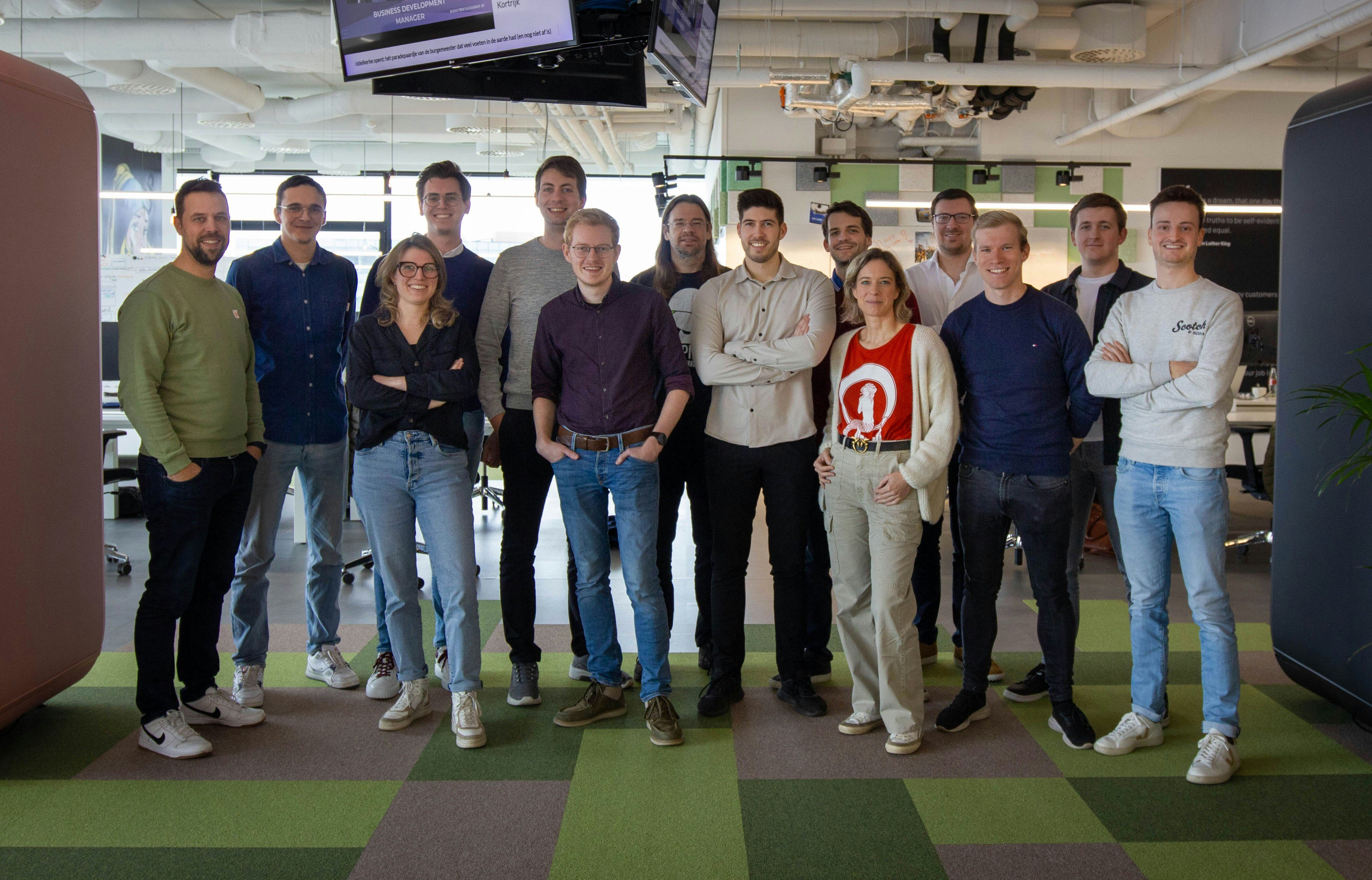

Artificial intelligence (AI) is typically defined as the ability of a machine to perform cognitive functions we associate with human minds. Functions such as perceiving, reasoning, learning and problem solving. In specific cases, AI machines do a far better job at those things than we do.
AI is not one technology. It’s a toolbox of different technologies with the potential to outperform or augment human performance, especially in complex repetitive tasks that require connecting vasts amounts of data points. Every technology in AI’s toolbox is a building block capable of doing one specific task very well and ad infinitum, without ever complaining.
To be able to employ this formidable power, you’ll need two things: a lot of data and a mathematical model that you need to train. Simply put, that mathematical model is a formula that generates output from the data you feed it. But just any data isn’t enough. Only when your data is visible, adequate, and complemented with external data and representative for your demographic, can you really profit from AI’s huge potential. We’ve written a blog post about this earlier, click here to read ‘Is your data ready for Artificial Intelligence?’.
No, we’re not helping the robots enslave humanity
Okay, so structured data and a mathematical model are all we need to give people superpowers. But… what about creating supervillains?
Robot overlords enslaving all of humanity in the not-so-distant future is a concern that’s often portrayed in popular culture. Think for example of 2001: A Space Odyssey’s HAL 9000, Terminator’s Skynet and the androids from I, Robot. And it’s not just popular culture: well-known scientists such as Stephen Hawking have already warned us of the dangers that advanced AI might pose.

So, that’s it then. We have a few good years left before AI takes over the world and enslaves us all. Right? Well, not really. Even though popular culture and science (-fiction) is rife with examples, AI advanced enough to rule the world is still a long way off. Besides, that’s not what we’re focusing on here at ACA. At least, not right now… 😉
Instead of artificial intelligence, which intends to replace humans, we chose to focus on augmented intelligence. Augmented intelligence is the use of technology to supplement and support human intelligence, with humans remaining at the center of the decision making process. Basically, augmented intelligence allows us to give people superpowers: predicting the future, optimizing processes in ways that weren’t possible before, helping us to make decisions and so much more.
What use is there for AI then?
Artificial intelligence impacts businesses in 4 benefit domains:
- engaging your customers, e.g. by shorting conversation cycles through chatbots;
- enabling your employees, e.g. by automating repetitive tasks, allowing them to focus more on creativity or difficult to automate tasks;
- transforming your products and services, e.g. through providing added value with new services;
- optimizing your operations, e.g. by reducing costs through prediction and deep insights.
Companies today use AI mainly for the 5 business cases listed below. For clarity’s sake I’ve added a tangible example for each business case, based on a service most of us are familiar with: Google Maps.
- Predicting: anticipating events and their outcomes. For example: Google Maps will predict how long your commute to work will be for your chosen means of transport. Through a predictive model, we were able to reduce the inventory carrying cost of one of our clients by almost 75%. You can read more about how exactly in this blog post.
- Automating: handling tasks without human intervention. For example: Google Maps asking you if you want to navigate home as soon as it notices you’re driving away from work, after it previously figured out which location is work and which one is home.
- Insights: identifying and understanding patterns and trends. In this case, Google Maps provides insights to its users (e.g. notifying them of traffic jams), but also to advertisers: how long people commute, when they work from home, and so on.
- Personalizing: tailoring content and user-experiences to specific users and providing them with recommendations based on their profile. This should sound familiar to anyone using Netflix’s ‘Recommended for you’ or Spotify’s ‘Discover weekly’ feature. Google Maps does this as well, for example providing you with tailored points of interest along your route.
- Prescribing: complex decision-making based on numerous factors. For example: Google Maps will tell you to take the next exit on the highway to reach your destination while avoiding the traffic jam ahead.

Why should I care about AI in my business?
Remember when we used actual film rolls in our cameras to take pictures? In the early 2000s, Kodak was still a well-known and lucrative company. However, by failing to truly embrace the opportunities that the shift to digital photography brought along, it was forced to file for bankruptcy in 2012 with a debt of 6.8 billion US dollars.
It doesn’t matter if you call it digital disruption, digital transformation or digital revolution: the fact is that businesses that don’t go digital now may not survive (Cisco 2015). And even if you are still in business, investing in digital is understood in an effort to catch up. Everyone realizes the power of going digital now.
But many people are yet to realize the power of artificial intelligence.
It’s not that Kodak didn’t do anything with digital photography – they even invented it – but they didn’t capitalize on its potential to change the industry. Just like the digital transformation before it, AI will change industries. AI will alter the relationship between businesses and technology, reduce the burden on skilled labor and ease the decision-making processes of management while revolutionizing business models (Observer 2016).
You don’t want to make the same mistake as Kodak when it comes to AI. You have to stop looking at tech itself, and start looking at its impact. You can bet your competitors will.
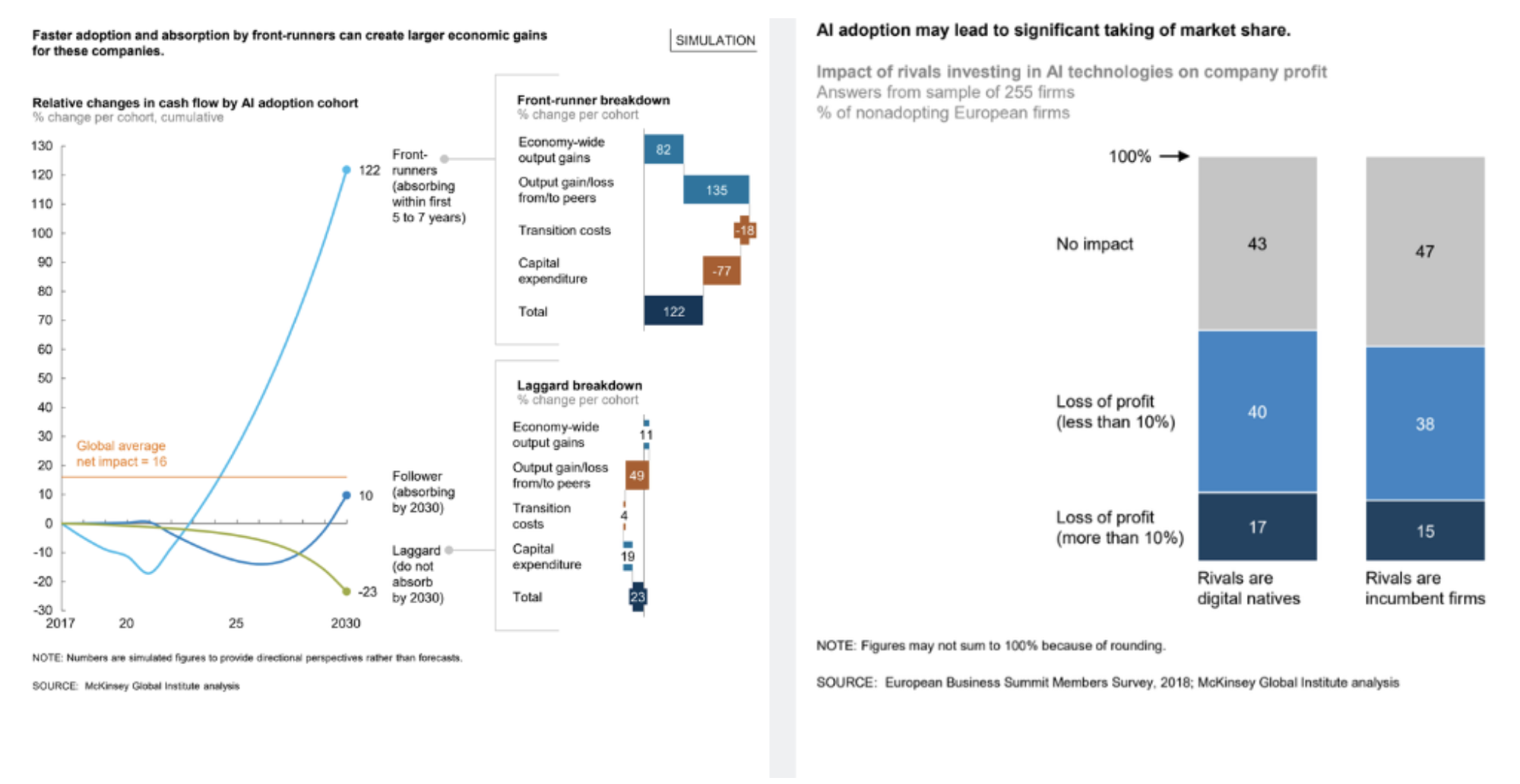
The simulated statistics above show why it’s important for you to start adopting AI now (see front-runner breakdown). The sooner you do, the more revenue you’ll get in the long run. Yes, adopting AI will take a lot of resources, however the profits far outweigh the investments. Don’t delay: act today and enjoy your strong competitive advantage tomorrow. If you act tomorrow, your competitive edge will be largely gone and if you don’t act tomorrow, you’ll end up with a hopeless competitive handicap (see laggard breakdown). When it comes to AI, it’s do-or-die.
But I don’t even know how to start with AI!
There are indeed a few obstacles to overcome when it comes to incorporating AI into your business:
- there might not be a clear strategy for AI in your business,
- it's difficult to find people with the appropriate skill set for AI work,
- functional silos still constrain end-to-end solutions (e.g. different departments all working according to their own processes without sharing information),
- your organization might lack the technological infrastructure to support AI,
- and there might be a lack of available data (i.e. collected and structured) data.
This is where we can help you.
You need to get on the AI train, but don’t jump the AI wagon blindly. It’s never nice to start with something and then discover you skipped a few essential steps later on. That’s why we propose a step-by-step approach with 3 essential steps to transform your business into an AI-driven organization.
- First, you'll need to have leadership with the ability to lead an AI transformation from top to bottom. You can do this by articulating a vision, setting goals and securing broad buy-in across your organization. Identify which problems you want to solve and which opportunities to pursue.
- Manage your data. Capture, store, structure label, and govern your data to build the foundation and infrastructure to work with AI technologies.
- Obtain and deploy specialized data science, data engineering, data architecture and data visualization skills by relentlessly training employees or attracting new talent, preferable ahead of the curve.
You don’t have to do this alone. We can help you bridge the gap and get started with a workshop in which we demystify AI and have an interactive session around 1 to 3 specific pains, with the goal to check whether:
- you need AI to solve that pain,
- your organization is ready for an AI solution.
Contact us for personalized advice and let’s get you your superpower.
What others have also read
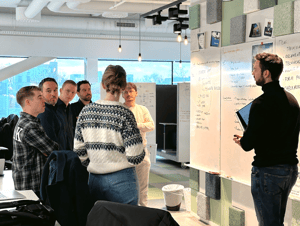
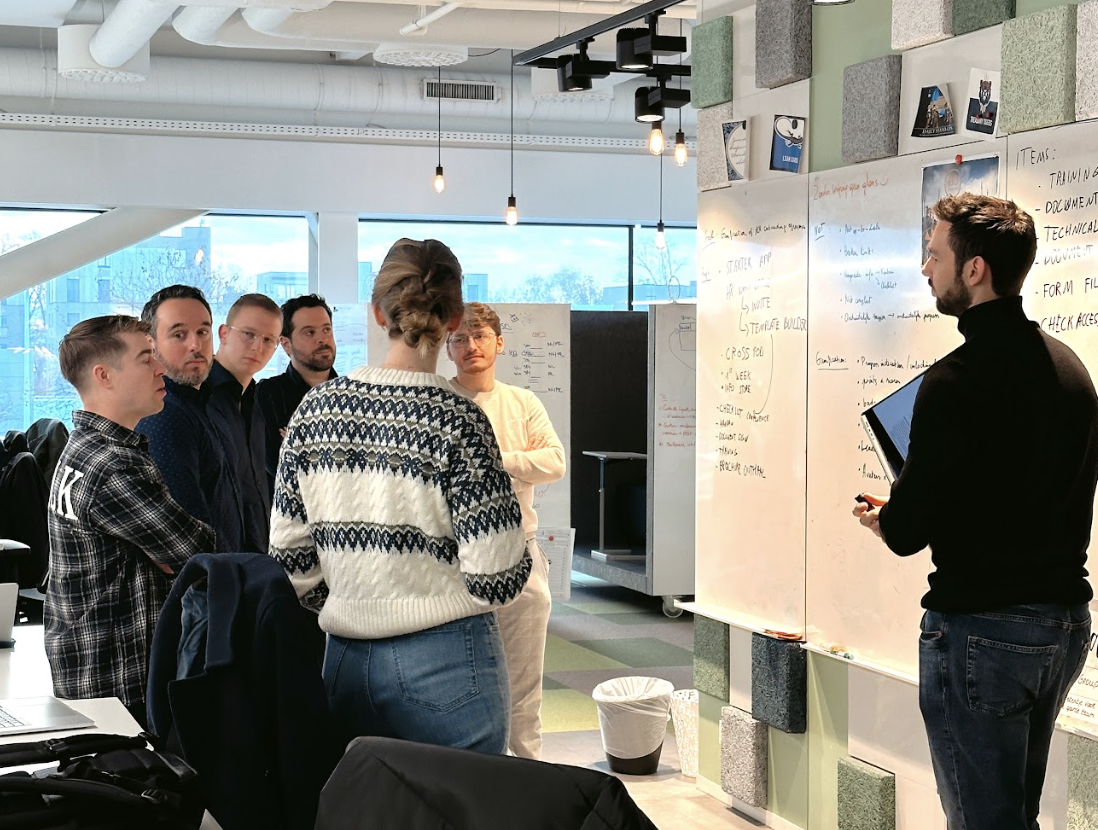
November 30, 2023 marked a highly anticipated day for numerous ACA employees. Because on Ship-IT Day, nine teams of ACA team members, whether or not supplemented with customer experts, delved into creating inventive solutions for customer challenges or for ACA Group itself. The hackathon proved to be both inspiring and productive, with at the end a deserved winner! The atmosphere in the ACA office in Hasselt was sizzling right from the early start. Eight out of the nine project teams were stationed here. During the coffee cake breakfast, you immediately felt that it was going to be an extraordinary day. There was a palpable sense of excitement among the project team members , as well as a desire to tackle the complex challenges ahead. 9 innovative projects for internal and external challenges 🚀 After breakfast, the eight project teams swarmed to their working habitat for the day. The ninth team competed in the ACA office in Leuven. We list the teams here: Chatbot course integration in customer portal System integration tests in a CI/CD pipeline Onboarding portal/platform including gamification Automatic dubbing, transcription and summary of conversations publiq film offering data import via ML SMOCS, Low level mock management system Composable data processing architecture Virtual employees Automated invoicing If you want to know more about the scope of the different project teams, read our first blog article Ship-IT Day 2023: all projects at a glance . Sensing the atmosphere in the teams Right before noon, we wondered how the teams had started and how their work was evolving. And so we went to take a quick look... 👀 1. Chatbot course integration in customer portal “After a short kick-off meeting with the customer, we divided the tasks and got to work straight away,” says Bernd Van Velsen. “The atmosphere is great and at the end of the day, we hope to present a result that will inspire the customer . In the best case, we will soon be able to use AI tools in a real customer project with the aim of making more optimal use of the customer's many data.” “The Ship-IT Day is an annual tradition that I like to participate in,” says Bernd. “Not only because it is great to collaborate with colleagues from other departments, but also because it is super educational.” 2. System integration tests in a CI/CD pipeline “We want to demonstrate that we can perform click tests in the frontend in an existing environment and verify whether everything works together properly,” says Stef Noten. “We can currently run the necessary tests locally, so we are good on schedule. The next step is to also make this work in our build pipeline. At the end of the day, we hope we will be able to run the tests either manually or scheduled on the latest version of the backend and frontend .” 3. Onboarding portal/platform including gamification The members of this project team all started at ACA fairly recently. And that is exactly what brought them together, because their goal was to develop a platform that makes the onboarding process for new employees more efficient and fun . Dieter Vennekens shared his enthusiasm with us, stating, "We kicked off with a brainstorming session to define the platform's requirements and goals. Subsequently, we reviewed these with the key users to ensure the final product aligns with their expectations. Our aim is to establish the basic structure before lunch, allowing us to focus on development and styling intensively in the afternoon. By the day's end, our objective is to unveil a functional prototype. This project serves as an opportunity to showcase the capabilities of Low-Code .” 4. Automatic dubbing, transcription and summary of conversations Upon entering their meeting room, we found the project team engrossed in their work, and Katrien Gistelinck provided a concise explanation for their business. "Our project is essentially divided into two aspects. Firstly, we aim to develop an automatic transcription and summary of a conversation . Concurrently, we are working on the live dubbing of a conversation, although we're uncertain about the feasibility of the latter within the day. It might be a tad ambitious, but we are determined to give it a try." She continued, "This morning, our focus was on defining the user flow and selecting the tools we'll utilize. Currently, multiple tasks are progressing simultaneously, addressing both the UI and backend components." 5. Publiq film offering data import via ML Comprising six publiq employees and three from ACA, this team engaged in an introductory round followed by a discussion of the project approach at the whiteboard. They then allocated tasks among themselves. Peter Jans mentioned, "Everyone is diligently working on their assigned tasks, and we maintain continuous communication. The atmosphere is positive, and we even took a group photo! Collaborating with the customer on a solution to a specific challenge for an entire day is energizing. " "At the close of the day, our objective is to present a functional demo showcasing the AI and ML (Machine Learning) processing of an email attachment, followed by the upload of the data to the UIT database. The outcome should be accessible on uitinvlaanderen.be ." Peter adds optimistically, "We're aiming for the win." That's the spirit, Peter! 6. SMOCS, Low level mock management system Upon our arrival, the SMOCS team was deeply engrossed in their discussions, making us hesitant to interrupt. Eventually, they graciously took the time to address our questions, and the atmosphere was undoubtedly positive. "We initiated the process with a brief brainstorming session at the whiteboard. After establishing our priorities, we allocated tasks accordingly. Currently, we are on track with our schedule: the design phase is largely completed, and substantial progress has been made with the API. We conduct a status check every hour, making adjustments as needed," they shared. "By the end of the day, our aim is to showcase an initial version of SMOCS , complete with a dashboard offering a comprehensive overview of the sent requests along with associated responses that we can adjust. Additionally, we have high hopes that the customized response will also show up in the end-user application." 7. Composable data processing architecture This project team aims to establish a basic architecture applicable to similar projects often centered around data collection and processing. Currently, customers typically start projects from scratch, while many building blocks could be reused via platform engineering and composable data. “Although time flies very quickly, we have already collected a lot of good ideas,” says Christopher Scheerlinck. “What do we want to present later? A very complex scheme that no one understands (laughs). No, we aspire to showcase our concepts for realizing a reusable architecture , which we can later pitch to the customer. Given that we can't provide a demo akin to other teams, we've already come to terms with the likelihood of securing second place!" 8. Virtual employees This team may have been the smallest of them all, but a lot of work had already been done just before noon. “This morning we first had a short meeting with the customer to discuss their expectations,” Remco Goyvaerts explains. “We then identified the priority tasks and both of us quickly got to work. The goal is to develop a virtual colleague who can be fed with new information based on AI and ML . This virtual colleague can help new employees find certain information without having to disturb other employees. I am sure that we will be able to show something beautiful, so at the moment the stress is well under control.” Chatbot technology is becoming more and more popular. Remco sees this Ship-IT project as the ideal opportunity to learn more about applications with long-term memory. “The Ship-It Day is a fantastic initiative,” says Remco. “It's wonderful to have the opportunity to break away from the routine work structure and explore innovative ideas.” 9. Automated invoicing The client involved in this project handles 50,000 invoices annually in various languages. The objective is to extract accurate information from these invoices, translate it into the appropriate language, and convert it into a format easily manageable for the customer . “Although we started quite late, we have already made great progress,” notes Bram Meerten. "We can already send the invoice to Azure, which extracts the necessary data reasonably well. Subsequently, we transmit that data to ChatGPT, yielding great results. Our focus now is on visualizing it in a frontend. The next phase involves implementing additional checks and solutions for line information that isn't processed correctly." Bram expresses enthusiasm for the Ship-IT Day concept, stating, "It's fun to start from scratch in the morning and present a functional solution at the end of the day. While it may not be finished to perfection, it will certainly be a nice prototype." And the winner is …. 🏆 At 5 p.m., the moment had arrived... Each team had the opportunity to showcase their accomplishments in a 5-minute pitch, followed by a voting session where everyone present could choose their favorite. All teams successfully presented a functional prototype addressing their customer's challenges. While the SMOCS team may not have managed to visualize their solution, they introduced additional business ideas with the SMOCintosh and the SMOCS-to-go food concept. However, these ideas fell just short of securing victory. In a thrilling final showdown, the team working on the onboarding platform for ACA came out as the winners! Under the name NACA (New at ACA), they presented an impressive prototype of the onboarding platform, where employees gradually build a rocket while progressing through their onboarding journey. Not only was the functionality noteworthy, but the user interface also received high praise. Congratulations to the well-deserving winners! Enjoy your shopping and dinner vouchers. 🤩 See you next year!
Read more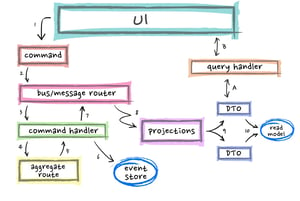
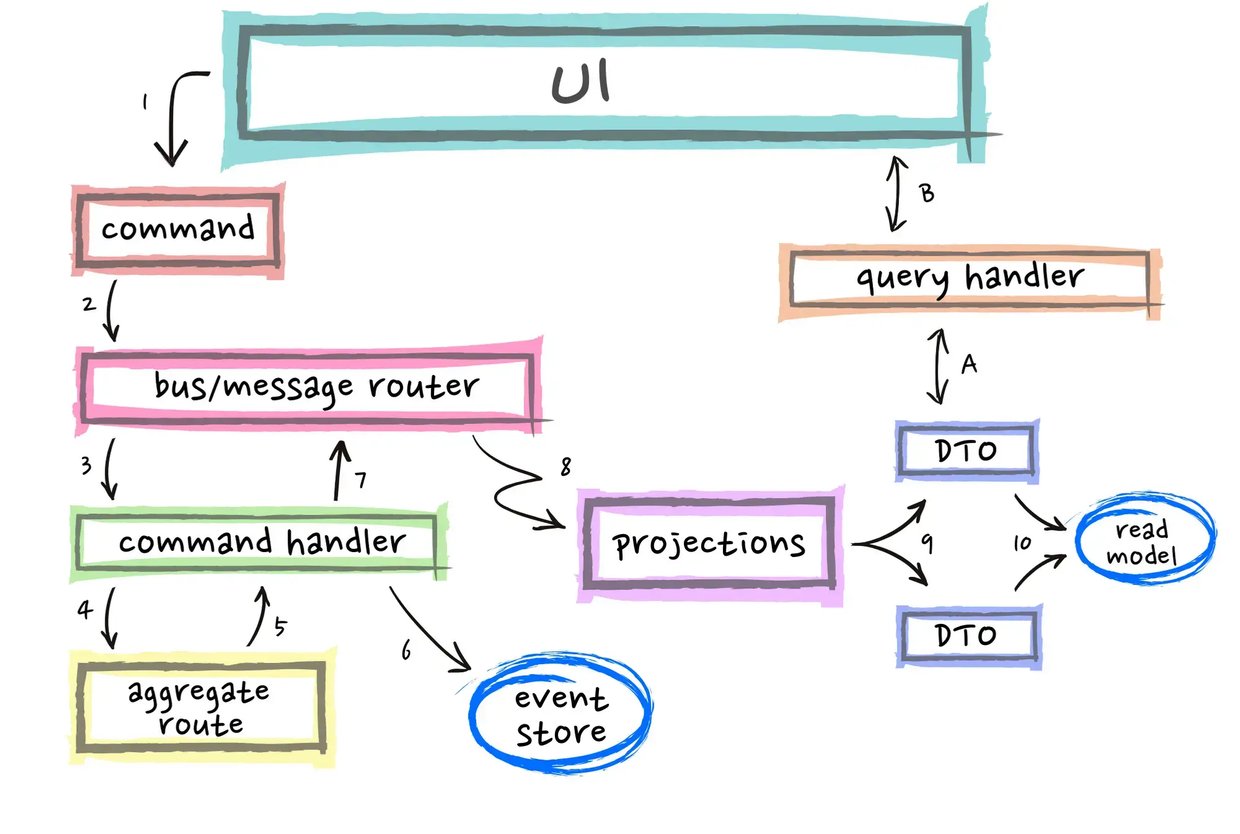
Staying current with the latest trends and best practices is crucial in the rapidly evolving world of software development. Innovative approaches like EventSourcing and CQRS can enable developers to build flexible, scalable, and secure systems. At Domain-Driven Design (DDD) Europe 2022 , Paolo Banfi delivered an enlightening talk on these two techniques. What is EventSourcing? EventSourcing is an innovative approach to data storage that prioritises the historical context of an object. Rather than just capturing the present state of an object, EventSourcing stores all the events that led to that state. Creating a well-designed event model is critical when implementing EventSourcing. The event model defines the events that will be stored and how they will be structured. Careful planning of the event model is crucial because it affects the ease of data analysis. Modifying the event model after implementation can be tough, so it's important to get it right from the beginning. What is CQRS CQRS (Command Query Responsibility Segregation) is a technique that separates read and write operations in a system to improve efficiency and understandability. In a traditional architecture, an application typically interacts with a database using a single interface. However, CQRS separates the read and write operations, each of which is handled by different components. Combining EventSourcing and CQRS One of the advantages of combining EventSourcing and CQRS is that it facilitates change tracking and data auditing. By keeping track of all the events that led to a particular state, it's easier to track changes over time. This can be particularly useful for applications that require auditing or regulation. Moreover, separating read and write operations in this way provides several benefits. Firstly, it optimises the system by reducing contention and improving scalability. Secondly, it simplifies the system by isolating the concerns of each side. Finally, it enhances the security of sensitive data by limiting access to the write side of the system. Another significant advantage of implementing CQRS is the elimination of the need to traverse the entire event stream to determine the current state. By separating read and write operations, the read side of the system can maintain dedicated models optimised for querying and retrieving specific data views. As a result, when querying the system for the latest state, there is no longer a requirement to traverse the entire event stream. Instead, the optimised read models can efficiently provide the necessary data, leading to improved performance and reduced latency. When to use EventSourcind and CQRS It's important to note that EventSourcing and CQRS may not be suitable for every project. Implementing EventSourcing and CQRS can require more work upfront compared to traditional approaches. Developers need to invest time in understanding and implementing these approaches effectively. However, for systems that demand high scalability, flexibility or security, EventSourcing and CQRS can provide an excellent solution. Deciding whether to use CQRS or EventSourcing for your application depends on various factors, such as the complexity of your domain model, the scalability requirements, and the need for a comprehensive audit trail of system events. Developers must evaluate the specific needs of their project before deciding whether to use these approaches. CQRS is particularly useful for applications with complex domain models that require different data views for different use cases. By separating the read and write operations into distinct models, you can optimise the read operations for performance and scalability, while still maintaining a single source of truth for the data. Event Sourcing is ideal when you need to maintain a complete and accurate record of all changes to your system over time. By capturing every event as it occurs and storing it in an append-only log, you can create an immutable audit trail that can be used for debugging, compliance, and other purposes. Conclusion The combination of EventSourcing and CQRS can provide developers with significant benefits, such as increased flexibility, scalability and security. They offer a fresh approach to software development that can help developers create applications that are more in line with the needs of modern organisations. If you're interested in learning more about EventSourcing and CQRS, there are plenty of excellent resources available online. Conferences and talks like DDD Europe are also excellent opportunities to stay up-to-date on the latest trends and best practices in software development. Make sure not to miss out on these opportunities if you want to stay ahead of the game! The next edition of Domain-Driven Design Europe will take place in Amsterdam from the 5th to the 9th of June 2023. Did you know that ACA Group is one of the proud sponsors of DDD Europe? {% module_block module "widget_bc90125a-7f60-4a63-bddb-c60cc6f4ee41" %}{% module_attribute "buttons" is_json="true" %}{% raw %}[{"appearance":{"link_color":"light","primary_color":"primary","secondary_color":"primary","tertiary_color":"light","tertiary_icon_accent_color":"dark","tertiary_text_color":"dark","variant":"primary"},"content":{"arrow":"right","icon":{"alt":null,"height":null,"loading":"disabled","size_type":null,"src":"","width":null},"tertiary_icon":{"alt":null,"height":null,"loading":"disabled","size_type":null,"src":"","width":null},"text":"More about ACA Group"},"target":{"link":{"no_follow":false,"open_in_new_tab":false,"rel":"","sponsored":false,"url":{"content_id":null,"href":"https://acagroup.be/en/aca-as-a-company/","href_with_scheme":"https://acagroup.be/en/aca-as-a-company/","type":"EXTERNAL"},"user_generated_content":false}},"type":"normal"}]{% endraw %}{% end_module_attribute %}{% module_attribute "child_css" is_json="true" %}{% raw %}{}{% endraw %}{% end_module_attribute %}{% module_attribute "css" is_json="true" %}{% raw %}{}{% endraw %}{% end_module_attribute %}{% module_attribute "definition_id" is_json="true" %}{% raw %}null{% endraw %}{% end_module_attribute %}{% module_attribute "field_types" is_json="true" %}{% raw %}{"buttons":"group","styles":"group"}{% endraw %}{% end_module_attribute %}{% module_attribute "isJsModule" is_json="true" %}{% raw %}true{% endraw %}{% end_module_attribute %}{% module_attribute "label" is_json="true" %}{% raw %}null{% endraw %}{% end_module_attribute %}{% module_attribute "module_id" is_json="true" %}{% raw %}201493994716{% endraw %}{% end_module_attribute %}{% module_attribute "path" is_json="true" %}{% raw %}"@projects/aca-group-project/aca-group-app/components/modules/ButtonGroup"{% endraw %}{% end_module_attribute %}{% module_attribute "schema_version" is_json="true" %}{% raw %}2{% endraw %}{% end_module_attribute %}{% module_attribute "smart_objects" is_json="true" %}{% raw %}null{% endraw %}{% end_module_attribute %}{% module_attribute "smart_type" is_json="true" %}{% raw %}"NOT_SMART"{% endraw %}{% end_module_attribute %}{% module_attribute "tag" is_json="true" %}{% raw %}"module"{% endraw %}{% end_module_attribute %}{% module_attribute "type" is_json="true" %}{% raw %}"module"{% endraw %}{% end_module_attribute %}{% module_attribute "wrap_field_tag" is_json="true" %}{% raw %}"div"{% endraw %}{% end_module_attribute %}{% end_module_block %}
Read more

Nowadays, there is constant talk about the importance of a 'real-time enterprise' that can immediately notice and respond to any event or request. So, what does it mean to be ‘real-time’? Real-time technology is crucial for organizations because real-time decision-making is a competitive differentiator in today's fast-paced world. A real-time application requires the ability to ingest, structure, analyze and act on data in real-time. The emphasis lies on providing insights and decision-making whenever an event occurs, rather than days or even weeks afterwards. Today’s business systems are primarily capable of providing what a real-time application promises: collecting data in real-time. Another criterion, which is analyzing this data and gaining valuable insight in real-time, is a whole other challenge. It is also often confused with the former, diverting attention from what should be the main considerations when planning a real-time application: What are the decisions your business needs to make when receiving data? What slows down your business in making those decisions? How will your business benefit from this ability to make decisions? Enterprises must first be able to answer these considerations and make them clear to the rest of the business before the successful implementation of a real-time application can be guaranteed. Goals of real-time The sole purpose of a real-time application is to make decisions in real-time. As these applications will control a much larger part of an enterprise, close cooperation with humans will offer significant advantages and become a requirement in the future. Software will automate deterministic functions and standardized activities. At the same time, humans will add experience, intuition, and values to: assure the most appropriate actions are taken, intervene when they are not, and take charge when it is not clear enough what to do. By interactions, we mean communication that goes far beyond text, email or chat systems. We are talking about truly sophisticated collaborative relationships in which a software application and a human being communicate and are each aware of the context of what is happening, how a situation changes over time, and what choices or recommendations are likely to produce the best results. The 3 steps to become a real-time enterprise Now that we’ve established what a real-time enterprise is: how do you become one? There are 3 key steps to take into account: Put business needs first: adopt the mindset to create and change both business and operational processes with a real-time-first attitude. For example: allowing certain automatic decisions depending on what data streams are feeding your applications. Speaking of data… get it right! Moving to real-time also requires robust data management that supports both emerging streaming data and traditional data sources for real-time data integration. Look to the edge: as we’ve already established, going to real-time also requires implementing real-time analytics where the data originates and delivering analytics. This requires autonomous support to perform analytics closer to the data source without connecting to the cloud, creating more flexible and powerful deployments. With edge computing, organizations can ingest, enrich and analyze data locally, run machine learning models on cleansed datasets and deliver enhanced predictive capabilities. The velocity and volume of data arriving in real-time require in-memory stream analytics and complex event processing. It requires a shift from a traditional 3-tier database-centric architecture (with presentation, application and data tiers) to a modern event-driven architecture method of application development. Conclusion Although we’ve only scratched the surface, we hope this article has shown you how exciting and valuable real-time applications can be. If you want to learn more or explore ways to implement these technologies into your business, get in touch. We would be happy to help you transform into a real-time enterprise!
Read moreWant to dive deeper into this topic?
Get in touch with our experts today. They are happy to help!

Want to dive deeper into this topic?
Get in touch with our experts today. They are happy to help!

Want to dive deeper into this topic?
Get in touch with our experts today. They are happy to help!

Want to dive deeper into this topic?
Get in touch with our experts today. They are happy to help!


